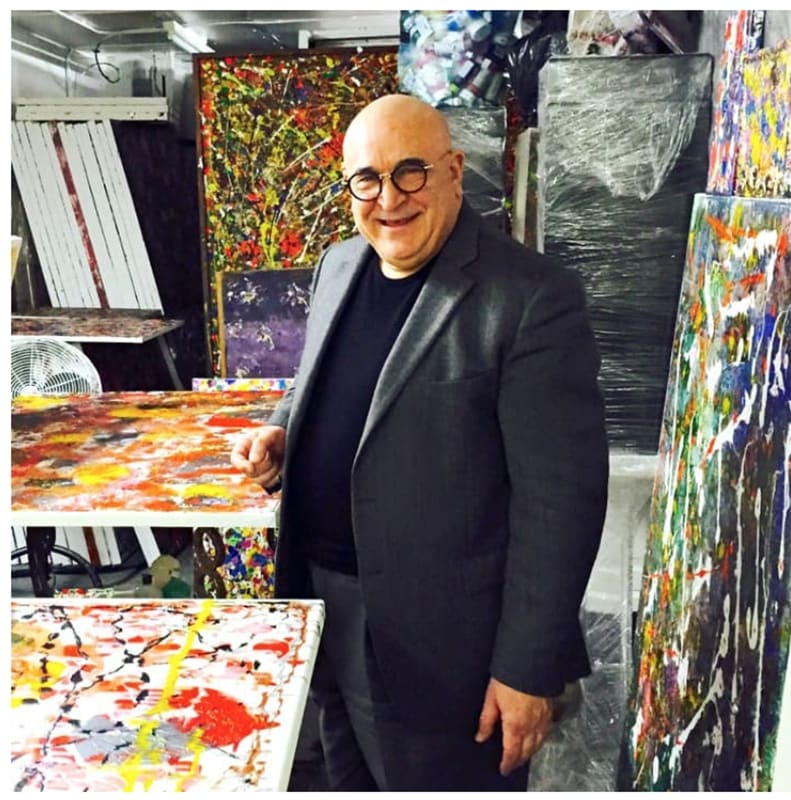Born in 1949 into an old farming family, Fayez was exposed to art from a very young age. The family owned vineyards in the Hebron Hills in Palestine and for generations villagers ploughing the fields would unearth objects - from coins and pottery all the way through to tombs. Rather than discarding or destroying the artefacts, as was often the case at the time, Fayez's grandfather preserved pieces. Intermittently he took his pieces from his collection to the marketplace, along with the family's produce. It was bought by foreign tourists. As the family enterprise grew Fayez spent his formative years working alongside British archeologist Kathleen Kenyon, developing skills in the basic principles of field archeology, and he would later apply his passion to studying under renowned Middle Eastern scholars and archaeologists Nelson Glueck and William Dever. His interest, in particular, was in ancient coinage, though he would become a fervent student of whatever new period of art took his interest.
"For me to be able to connect to Emperor Constantine at the age of seven, after being told a coin I found was about 1,700 years old, simply blew my mind," he says in a 2010 interview of finding his first coin, by accident, on the way to school. "I became such an avid lover of history at an early age." Eventually Fayez turned down an opportunity to study medicine and joined the family business, helping to build it up across multiple locations in Jerusalem and Bethlehem. For the past 50 or so years Barakat has presided over the meteoric expansion of the gallery from a small shop in a Jerusalem Souk to a unique world-class collection and dealership with a global reach.
The early collections were classical, biblical, Egyptian and Mesoamerican, or pre-Columbian, art. The latter, in what emerges as a theme in his life story, was influenced by a chance meeting with the late American film director, screenwriter and actor John Huston, who would come to be a good friend and ultimately influence Barakat's decision to set up his first overseas gallery in Beverly Hills in 1983. Barakat had already opened in Amman, Jordan, in 1973, while galleries in London (2003) and at the Emirates Palace (2008), Seoul (2016) and Hong Kong (2017) would come much later.
"California's proximity to Mexico, its closeness to South and Central America and the availability of the material in Los Angeles that I was able to purchase and to trade in and to learn about," are among the reasons listed by Barakat for the move to the US. In Jerusalem, Fayez had already begun to amass a storied clientele which was rumored to include notable 20th-century artists such as Pablo Picasso, Marc Chagall, Salvador Dali and Andy Warhol. It was a chance meeting with Picasso that Barakat has credited with his interest in African art, following their first encounter when Barakat was in his teens and Picasso was visiting the family gallery with the mayor of Jerusalem.
Throughout his life his culturally promiscuous collecting habits seem increasingly infused with a similar sort of creative spirit as the artists with whom the collection intermittently dealt with - his collecting became less and less about obvious value and more and more about the spirit of the thing - "the things that I cherish the most have a personality that transcends their obvious appearances or function and which I call energy. Like beauty, it is to be found in the eye or the touch of the individual. Energy is partly the result of reality and partly the role of imagination, and everyone perceives it differently" - and so the collection evolved into one which became less and less obsessed with satisfying any one niche and more about being a site to preserve that tremendous, inarticulable, energy that drives us to make art in the first place.
Fayez has also experienced its own share of tragic events with cancer robbing him of his first wife in 2009 just under two years after it claimed his son. When his wife first became ill, he would often retreat to a studio where he would paint into the early hours of the morning. Today, irrespective of where he is in the world, he paints nightly. As the galleries become increasingly self-reliant, Barakat is winding back on a grueling schedule that has seen him travel every month between homes and galleries around the world and focusing on his paintings. As a personal gesture toward the continuum of art as part of human experience Fayez often hangs one of his works in every show at his ancient art galleries. Over the last decade he has become, in his own way, a hyper-prolific artist.

